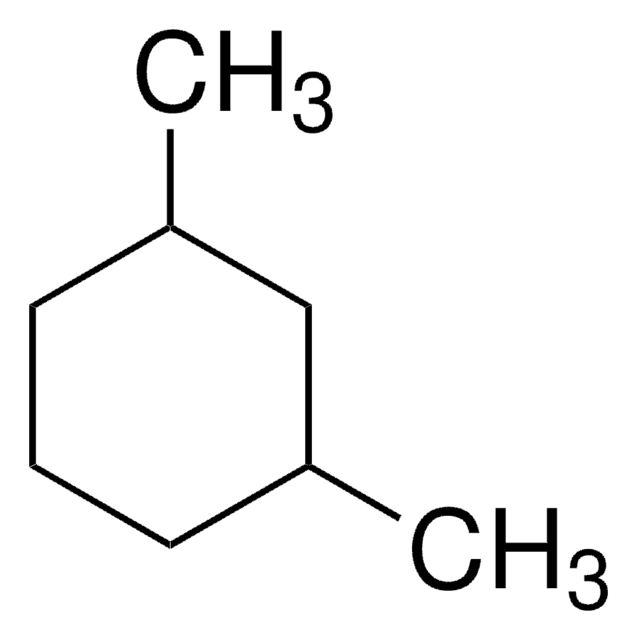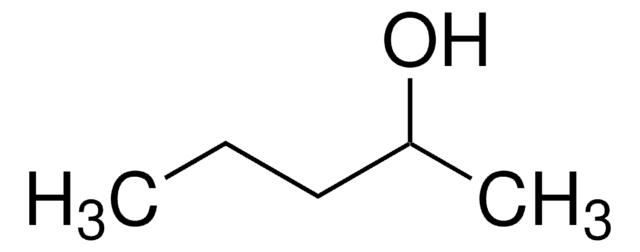152463
2-Methyl-2-butanol
ReagentPlus®, 99%
Synonim(y):
tert-Amyl alcohol, tert-Pentyl alcohol
About This Item
Polecane produkty
gęstość pary
3 (vs air)
Poziom jakości
ciśnienie pary
12 mmHg ( 20 °C)
linia produktu
ReagentPlus®
Próba
99%
Postać
liquid
temp. samozapłonu
819 °F
granice wybuchowości
9 %
współczynnik refrakcji
n20/D 1.405 (lit.)
pH
6.0 (20 °C, 118 g/L)
tw
102 °C (lit.)
mp
−12 °C (lit.)
gęstość
0.805 g/mL at 25 °C (lit.)
ciąg SMILES
CCC(C)(C)O
InChI
1S/C5H12O/c1-4-5(2,3)6/h6H,4H2,1-3H3
Klucz InChI
MSXVEPNJUHWQHW-UHFFFAOYSA-N
Szukasz podobnych produktów? Odwiedź Przewodnik dotyczący porównywania produktów
Opis ogólny
Zastosowanie
Informacje prawne
Hasło ostrzegawcze
Danger
Zwroty wskazujące rodzaj zagrożenia
Zwroty wskazujące środki ostrożności
Klasyfikacja zagrożeń
Acute Tox. 4 Dermal - Acute Tox. 4 Inhalation - Eye Dam. 1 - Flam. Liq. 2 - Skin Irrit. 2 - STOT SE 3
Organy docelowe
Central nervous system, Respiratory system
Kod klasy składowania
3 - Flammable liquids
Klasa zagrożenia wodnego (WGK)
WGK 1
Temperatura zapłonu (°F)
68.9 °F - closed cup
Temperatura zapłonu (°C)
20.5 °C - closed cup
Środki ochrony indywidualnej
Eyeshields, Faceshields, Gloves, type ABEK (EN14387) respirator filter
Choose from one of the most recent versions:
Masz już ten produkt?
Dokumenty związane z niedawno zakupionymi produktami zostały zamieszczone w Bibliotece dokumentów.
Klienci oglądali również te produkty
Protokoły
-Butanol; 2-Methyl-2-butanol; 2-Methyl-1-butanol; 3-Pentanol; 1-Butanol; 2-Methyl-1-propanol; 2-Pentanol, 98%; 3-Methyl-1-butanol; 1-Propanol
Nasz zespół naukowców ma doświadczenie we wszystkich obszarach badań, w tym w naukach przyrodniczych, materiałoznawstwie, syntezie chemicznej, chromatografii, analityce i wielu innych dziedzinach.
Skontaktuj się z zespołem ds. pomocy technicznej











